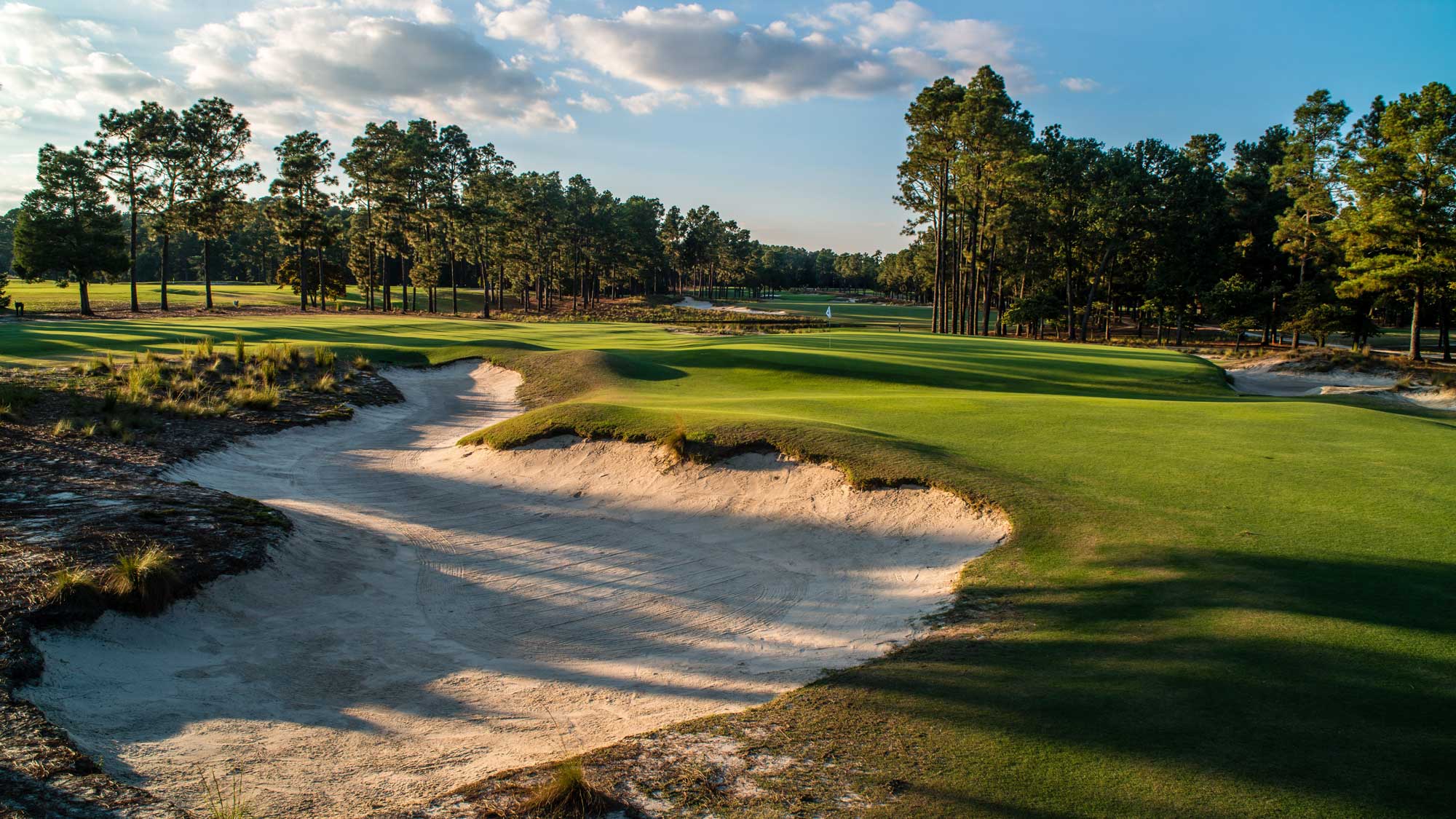Practice rounds are underway at Pinehurst No. 2 as the world’s best prepare for this week’s U.S. Open. But why should those guys get all the intel? Course knowledge matters to spectators too. With that in mind, we are offering some fodder for your U.S. Open watch party. Here are 10 things about the championship venue that you probably didn’t know.
1. It was a professional pivot for Donald Ross
Donald Ross was the most prolific architect of the early 20th century. But he wasn’t a designer when he first set foot in Pinehurst. James Walker Tufts, the Boston soda fountain magnate who founded the resort, brought Ross on as Pinehurst’s golf professional in 1900, but as the property evolved, so did Ross’s role. The rest is history.
2. The resort was meant to be a wellness retreat
In 1895, when Walker Tufts purchased the some-6,000 acres that would become Pinehurst, he had in mind a wellness retreat for wealthy travelers, believing as he did that the pine-scented air could help cure tuberculosis. It can’t. Nor can it fix your slice.
3. The greens weren’t always green
No. 2 is renowned for its turtleback greens. But those famed putting surfaces weren’t there at the beginning. From 1907, when the course was built, until 1935, its greens were a mix of oil and sand. They transitioned to grass in 1936, in time for Pinehurst to host the PGA Championship.
4. Ross lived on site
From 1925 until his death in 1948, Ross lived in a home overlooking the third hole. The residence still stands, and operates today as Dornoch Cottage. For $2,500, you can rent it two-and-a-half hours in the evening, a privilege that comes with a welcome reception, a farm-to-table dinner (menus starting at $130 per person) and a putting contest on the third green.
5. He tinkered, and tinkered
With No. 2 in his backyard, Ross had ample opportunity to work and rework the design he treasured. Among the myriad changes he made over the years was adding the 3rd and 6th holes, neither of which was part of the original routing.
6. That 6th is fierce
The 6th is a par 3, but at 216 yards, it’s no pushover. At the 2014 U.S. Open, it played the toughest on the course in relation to par, with a 3.37 stroke average for the week. In the third round that year, eventual winner Martin Kaymer found the green in regulation, then putted off it. He made bogey.
7. It hosted the Masters of its day
The North and South Open, first held at No. 2 in 1902, was a high-wattage golf event, one of the most prestigious in the country, and the “it” tournament of the southeast. Ben Hogan, Sam Snead and Walter Hagen all won it three times. Byron Nelson won it once. So did Tommy Bolt, in 1951, the swan song for the event. The pros wanted fatter purses, and that didn’t fly with Pinehurst patriarch Richard Tufts, who instead held steady in support of an amateur version of the tournament. The North & South Amateur, now in its 124th year, has given rise to such champs as Jack Nicklaus, Curtis Strange, Davis Love III, and, most recently, Nick Dunlap, who also won a PGA Tour event before turning pro this year.
8. It was the site of Hogan’s first professional win
Hogan’s first win in the North & South, in 1940, was also his first in his seven years as a pro. At the trophy presentation, where he was handed $1,000 in cash, he drank a glass of milk in celebration.
9. You can try to replicate Payne Stewart’s putt
For Sunday resort play through the year, Pinehurst cuts the cup on the 18th hole where it was in 1999, giving guests a chance to drain the same putt Payne Stewart made to clinch that year’s U.S. Open. Psst: the putt starts out breaking right, but, as the late, great Pinehurst caddie Willie McRae was fond of pointing out, it drifts left at the end.
10. It’s where ‘maniacs’ train their games
The practice range at Pinehurst is known as ‘Maniac Hill’ for the pounding it received from obsessive pros back in the early decades of the North and South Open. With an estimated 10 million balls still hit here every year, it remains a popular spot for seeking answers in the dirt.
